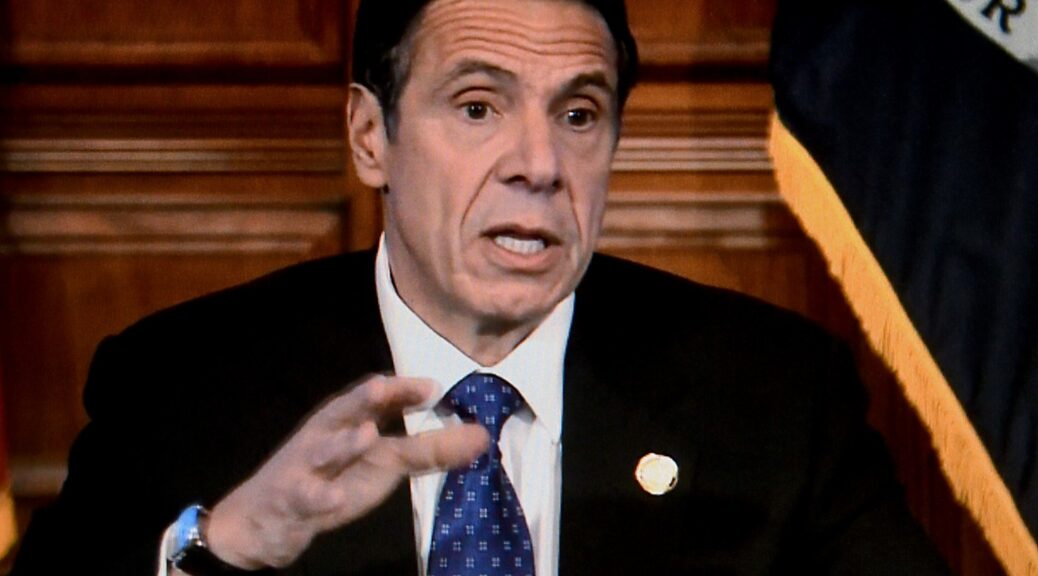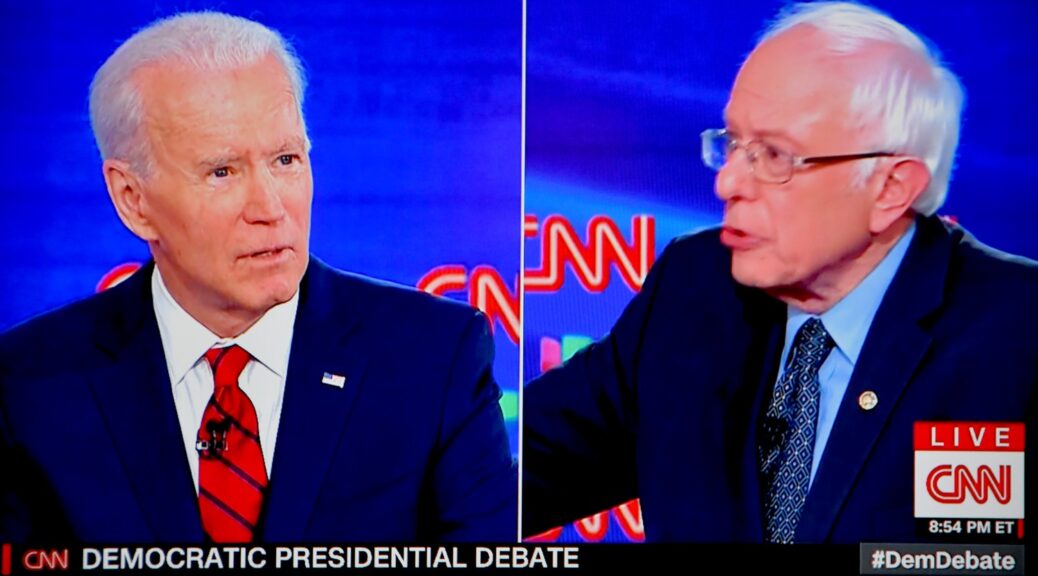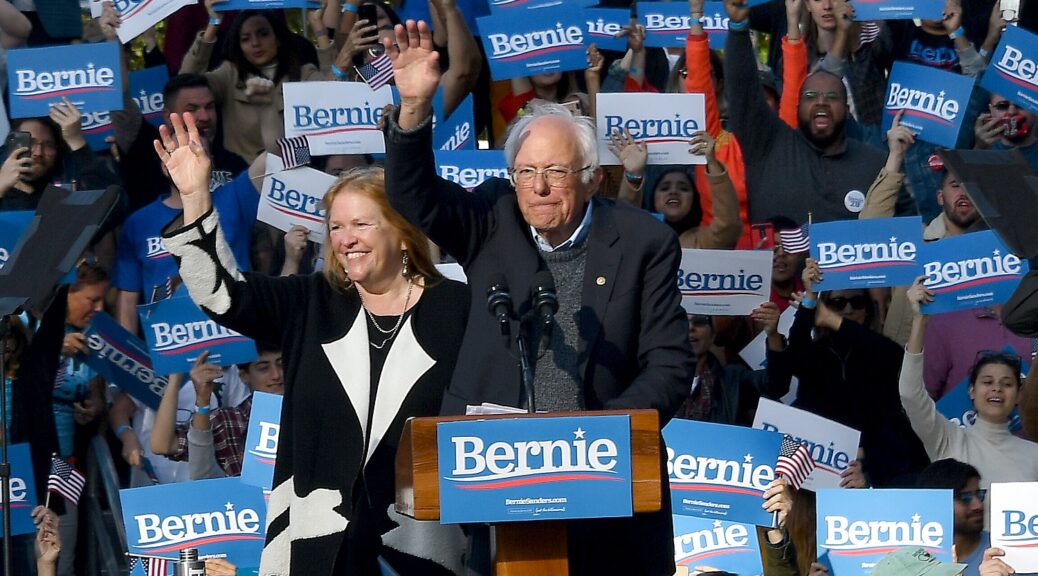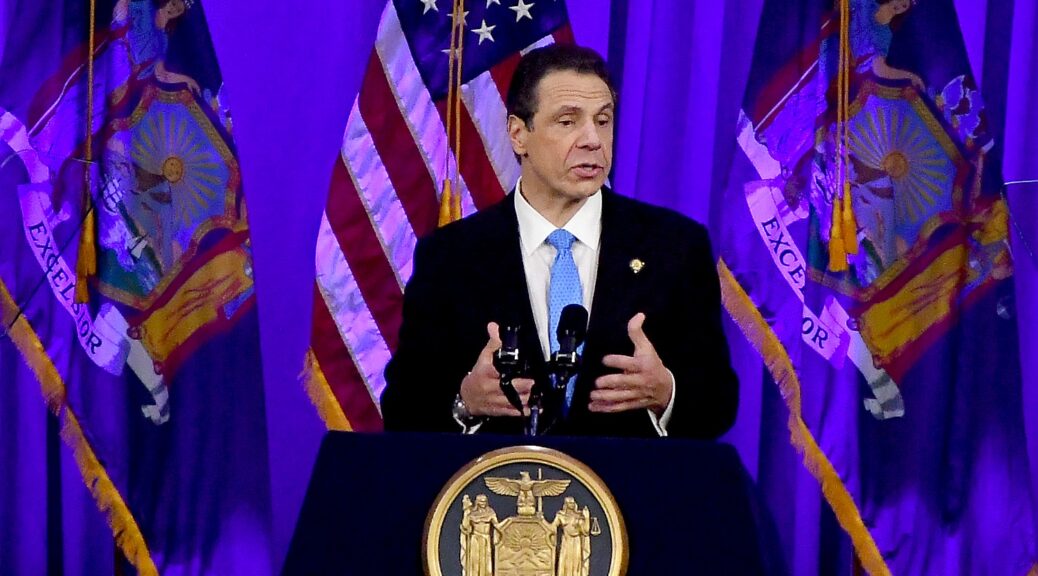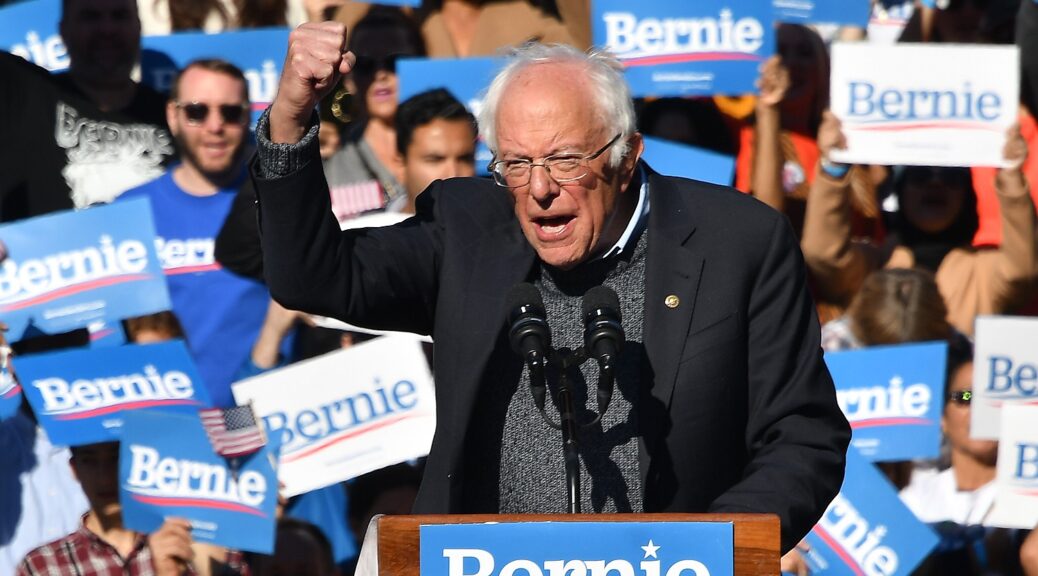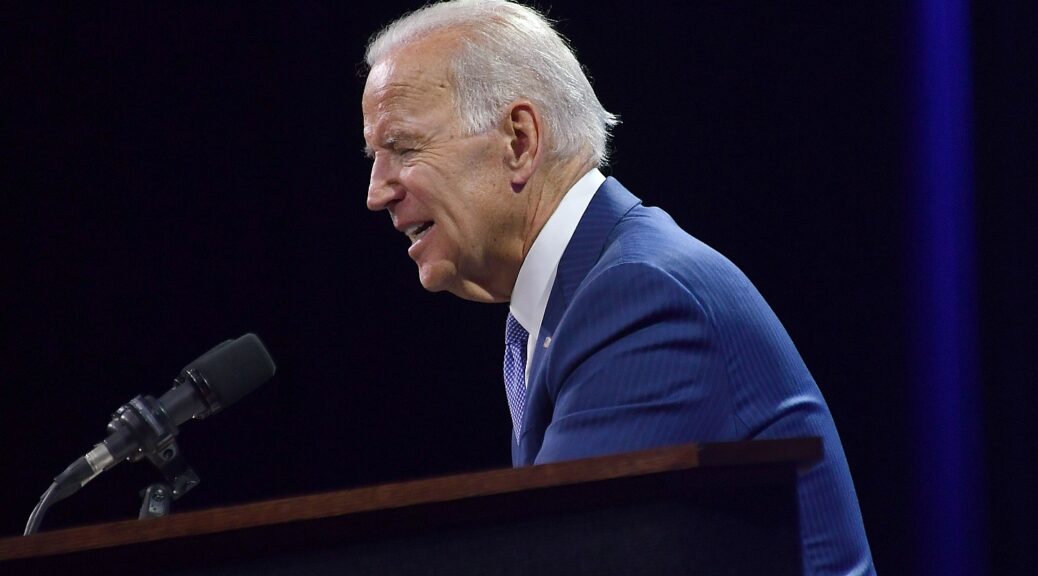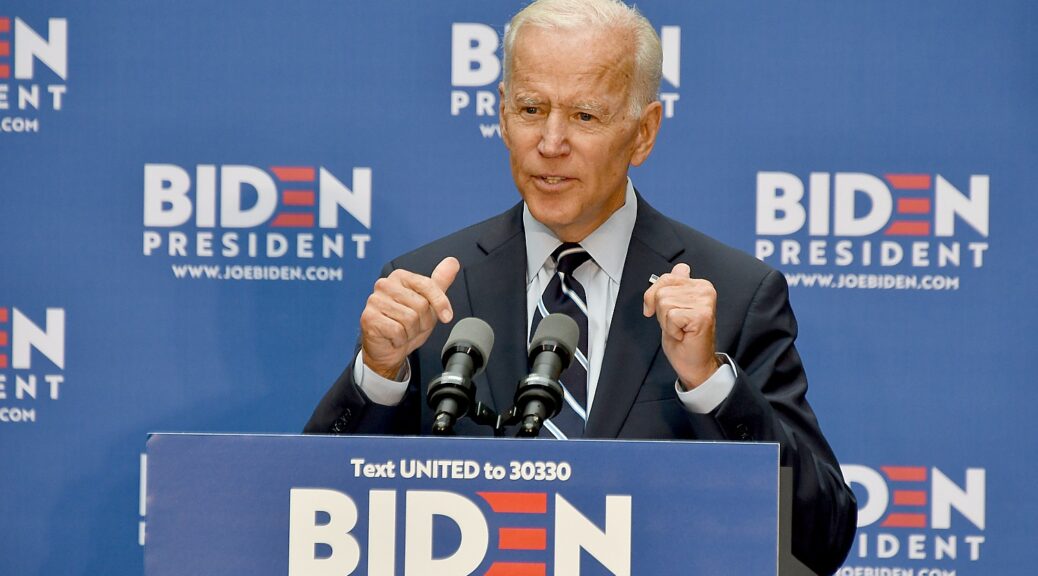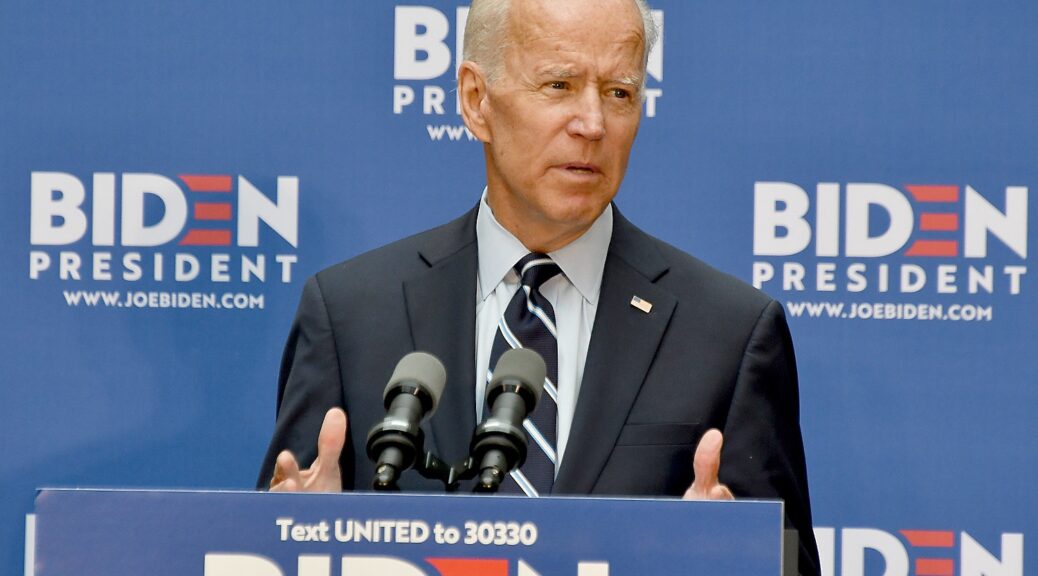
Governor Offers Full Partnership with Federal Government as Part of State’s Continued Efforts to Bring Mass Testing to Scale; New York Will Partner with Connecticut and New Jersey to Create a Regional Testing Partnership
Announces $200 Million in Emergency Food Assistance for More Than 700,000 Low-Income Households Enrolled in SNAP
Governor is Working with Congressional Delegation to Create a COVID-19 Heroes Compensation Fund
Announces New Partnerships with Private Sector to Provide Free Housing for Frontline Medical Workers
Releases ‘New York Tough’ Video Showing How New Yorkers are Spending Their Time at Home, Building on Ongoing State Efforts to Reach All Communities in New York with the Life-Saving Stay Home Message – Video is Available Here
Confirms 10,575 Additional Coronavirus Cases in New York State – Bringing Statewide Total to 170,512; New Cases in 54 Counties
The reason that the national coronavirus numbers are plateauing is because New York State, with more coronavirus cases than any other country, has brought down the rates of new infections, even as the daily death toll remains high. But it is not clear whether COVID-19 has yet to strike places where the numbers seem relatively low, because there is not sufficient testing. Trump is pushing to reopen the economy – desperate to be able to go into the election with a strong economy, low unemployment rates, high Dow – without care that lifting stay-at-home mitigation will trigger new spikes in infections and new waves, as are already being experienced in some Asian countries.
New York Governor Andrew Cuomo, who has received high marks for his command-and-control that clearly has resulted in significantly lower rates of infection than a slew of statisticians predicted could happen if steps to contain the virus were not implemented, said as much. Looking ahead to how and when the state could get back to work, he warned against doing it too early or too suddenly. Testing – both to diagnose and to determine if someone has the antibodies to effectively be immune to the coronavirus – is critical and he called for the federal government to exercise the Defense Production Act to get private labs and manufacturers to bring tests up to scale, that is, by the tens of millions.—Karen Rubin, news-photos-features.com.
Amid the ongoing COVID-19 pandemic, Governor Andrew M. Cuomo today announced New York State is ramping up antibody testing, a key component of any plan to reopen the economy. The state is currently conducting 300 of these antibody tests, and is on track to conduct 1,000 per day by next Friday and 2,000 per day by the following week. As part of the state’s continued efforts to bring mass testing to scale, the Governor offered a full partnership with the federal government to conduct this important work. In the interim, the Governor announced that New York, Connecticut and New Jersey will create a regional testing partnership to bring mass testing to scale for residents in these states.
Governor Cuomo also announced an additional $200 million in emergency food assistance will be available for more than 700,000 low-income households enrolled in the Supplemental Nutrition Assistance Program. Those enrolled in SNAP and not yet receiving the maximum benefit will receive an additional payment to bring them up to this amount in March and April. The supplemental benefits will be issued in April and delivered directly to recipients’ existing Electronic Benefit Transfer accounts. Households eligible for the supplement that live in counties outside of New York City will begin receiving the supplemental emergency benefit starting on April 13, and all eligible households will have received it by April 24. In New York City, the emergency benefits will be issued starting on April 14, and the issuance completed on April 25.
Governor Cuomo is also working with New York’s Congressional delegation to create a COVID-19 Heroes Compensation Fund to support health care and other frontline workers and their families who contracted COVID-19.
The Governor also announced new partnerships with the private sector to provide housing for frontline medical workers. Airbnb co-founder and CEO Brian Chesky will contribute $2 million to help provide rooms in union hotels at no cost to frontline workers. As part of this effort, 1199SEIU is partnering with Airbnb to offer housing to its members — comprised of hospital and other healthcare workers — as they fight the COVID-19 crisis statewide. Additionally, the InterContinental Times Square, Yotel and the Hudson Hotel are providing an additional 800 free rooms for health care workers coming to New York City from out of state, collaborating with the Hotel Association of New York City, MetLife and the Related Companies.
As part of Governor Cuomo’s social media awareness campaign, the state today released a video that features New Yorkers showing us their reality as they stay home under the state-wide Pause restrictions. Working in partnership with Resonant Pictures, the state put out a call for photographs of life in the city over the past three weeks. The video, set to the iconic song by The Fray, truly illustrates “How to Save a Life,” during the pandemic.
“The data has shown that what we do today will determine the infection rate two or three days from now, so we must continue to do what we are doing even though it is difficult –because it is working,” Governor Cuomo said. “The key to reopening is going to be testing. New York State has been very aggressive on testing, and our state lab is now developing an antibody test which is fast and non-invasive. The State Department of Health can currently do 300 tests a day and by next Friday, they will be able to do 1,000 tests and 2,000 tests the following week. That’s great, sounds like a lot, but 2,000 tests are still a drop in the bucket, and I’m proud of how New York has advanced on testing.”

Here is more of what Governor Cuomo said in his daily briefing:
“New York State has been very aggressive on testing and our state lab has been very aggressive on testing. Our state lab is now developing an antibody test which is a fast and not invasive test. The State Department of Health can do 300 tests a day. By next Friday, they will be able to do 1,000 tests and 2,000 tests the following week. That’s great, sounds like a lot but 2,000 tests are still a drop in the bucket, and I’m proud of how New Yorkers advanced on testing. You look at how quickly New York State has moved on testing and how many tests we have done – we’ve done a higher percentage of tests in New York State than other countries have done and New York State far exceeds what this nation as a whole is doing on testing. Even with our high capacity and high performance on testing it’s still not enough. It’s not enough if you want to reopen on a meaningful scale and reopen quickly so the testing front is going to be a challenge for us.
“Why can’t New York just develop more tests and do more testing? How do we get New York State Department of Health to scale? That’s an issue that we’ve been working on it’s harder than it sounds. You need certain reagents so you can do the testing. You need certain materials so you can do the testing. It’s very hard to get these reagents right. You’re in a situation where countries all across the globe are trying to do the same thing.
“Federal government has something called the Defense Production Act, DPA they call it, which I’ve been saying from day one is a very powerful tool for the federal government to use when they need to secure a product in the defense of this nation. This is in the defense of this nation. The federal government has used it effectively. They’ve used that in this situation more as a point of leverage than anything else, basically saying to a company, you know, we need you to do this, we do have the Defense Production Act that we could use. But we need an unprecedented mobilization where government can produce these tests in the millions.
“New York State Department of Health is doing is doing several thousand. We have 9 million people we want to get back to work. You need more than several thousand tests per week if this is going to happen any time soon. Private sector companies on their own, I don’t believe will be able to come to scale. We’re working with the private sector companies. They have the tests but they don’t have the capacity to come to scale. You’re going to need government intervention to make that happen and the federal government is in the best position to do that.
“New York State offers to be a full partner with the federal government. We do have the largest number of cases in New York. New York is an economic engine. I can’t do it as a state. If I had a Defense Production Act in the state, I would use it. I would use it. I don’t have that tool, the federal government does. Any way we can partner with the federal government to get these tests up to scale as quickly as possible, we are all in. I like to operate as a coalition with New Jersey and Connecticut because we are the tri-state area. I have spoken to Governor Murphy and Governor Lamont of Connecticut. They will join in a testing coalition. So, I ask the federal government if you are willing to step in and use the federal powers, New York State and New Jersey and Connecticut would partner with the federal government. And let’s get the testing up to scale quickly so we can start to build that bridge to reopening the economy.
“Second on reopening, you need a federal stimulus bill. You need a federal stimulus bill – they passed a couple already. But you need a fair federal stimulus bill that is not a political pork barrel bill. You know where the cases are. You know where the need is. I understand the political dynamics of the U.S. Senate but this is not a time to be passing bills that really are to make sure your home state gets enough funding. That’s not what this is about. This is about helping the country coming back and focusing on the need. When I says the bills were unfair to New York, the past bills, it is not just that I am advocating to New York. Look at the need. Look at where the cases are. Look at where the damage has been done. The federal government is trying to address that damage. You know where it has been done. Look at the chart on where the cases exist. Look at the number of deaths, the number of cases, the number of hospitalizations and help those places come back and come back quickly. That’s what the stimulus bill is supposed to be doing.
“Also, let’s make sure we are learning from what we just went through and are going through. Because there are lessons I think we should all be aware of over the past few months. And before you take a step forward, let’s make sure we know what we are stepping into. A question I had from day one, when you look back at this, where were the horns that should have been triggered back in December and January. Where were the warning signs? Who was supposed to blow the whistle? The President has asked this question and if think he’s right. The President’s answer is the World Health Organization should have been blowing the whistle. I don’t know enough to know if that’s right or wrong, but I know the question is right and sometimes the question is more important than the answer.
“How did this happen? I still want to know how this happened. Because the warning signs were there. And if you don’t know the answer, then how do you know it is not going to happen again, right? Fool me once – January, you go back and look at the headlines in January and you see questions and you see warnings. Now, they were all over the map, but we saw what was happening in Asia. We saw what was happening in Europe. Where were the international experts saying, ‘Well, if this is happening there, this is what we should expect to happen in the United States? Or prepare to happen in the United States?’ January, February, you still had sources in this country saying basically there’s nothing to worry about. You know, how did that happen? Did we really need to be in this situation where the United States winds up with a higher number of cases than the places that went before? We sat here and we watched China. China winds up have 84,000 cases, we wind up having 474,000 cases. I mean, how does that happen? We saw South Korea. They wind up with 10,000 cases. Italy, where we saw a collapse of the whole health system, winds up with 143,000 cases.
“I raise the question because the answer, again, is less important than the question, but before we move forward let’s make sure we’re not repeating the same mistake that we made, right? George Santayana. ‘Those who do not remember the past are condemned to repeat it.’ I don’t want to repeat what we just repeated, what we just went through over this past month.
“So, what are the relevant questions? Is there going to be a second wave? Let’s look at the countries that have gone through this reopening process and what can we learn from them? Right? Well, we have to start to reopen. Let’s look at what the other countries who have gone before us, what they did, what worked and what didn’t work. When you take just a cursory review you see caution signs. Hong Kong appeared to have the virus under control, they let its guard down, the virus came back. Hong Kong recorded the biggest rise in cases and a new wave of infections. Is that true? Could it happen here? Article yesterday, Italy has seen a bump in the number of cases. You know, before we take a step make sure we are more informed and more aware than we were in the past. They’re talking about a second wave in Singapore.
“You got back and you look at the 1918 flu epidemic. That was over 10 months. There was a first wave, there was a second wave. The second wave was worse than the first wave because the virus mutated. Third peak and the whole experience was 10 months. Is there any extrapolation to where we are today? I don’t know the answers. This is not what I do. It’s not what a state does.
“But, we know the questions and we should have the questions answered before we take a step forward. Yes, no one has been here before. These are totally uncharted waters. But we do know that none of this is predetermined and it is all a function of our actions. We are in total control of our destiny here. What we do will effect literally live and death for hundreds of people.
“So, where do we go from here? First, keep doing what we’re doing. Stay home because that works. We are flattening the curve, we must continue to flatten the curve. We have to get testing to scale. That is an entirely new exercise. It’s something we still haven’t done well in this country. We need both diagnostic testing and antibody testing. We need millions and millions of them. We need them in a matter of weeks, not months.
“We have to be more prepared as a nation. We should never go through this scramble that we went through with states competing against other states to buy masks from China. I mean, we should just never have been here in the first place, but certainly we should never be here again. And then let’s make sure we study the waters ahead and proceed with caution before we set off on the next journey. When we talk about reopening, let’s study the data and let’s look at what has happened around the world. Let’s make sure the best health minds in the country are giving us their best advice.
“How do we go forward? We stay New York tough. New York tough means more than just tough, it means discipline. It means unified. It means loving. And it means smart. Now is a time to be smart. Now more than ever. That’s what it means to be New York tough and we are.”
“The actual curve, today 18,569, is much, much better. How do you create a curve so different from the projections? In fairness to experts, nobody has been here before, and a big variable was what policies would put in place, and a bigger variable is whether people listen to the policies you put in place. Just because you announce a policy– to close businesses and everybody stay home – if people don’t take seriously or feel is political, they wouldn’t follow it.”
Finally, the Governor confirmed 10,575 additional cases of novel coronavirus, bringing the statewide total to 170,512 confirmed cases in New York State. Of the 170,512 total individuals who tested positive for the virus, the geographic breakdown is as follows:
| County | Total Positive | New Positive |
| Albany | 426 | 47 |
| Allegany | 26 | 4 |
| Broome | 112 | 7 |
| Cattaraugus | 18 | 1 |
| Cayuga | 27 | 11 |
| Chautauqua | 20 | 2 |
| Chemung | 59 | 0 |
| Chenango | 60 | 5 |
| Clinton | 43 | 3 |
| Columbia | 74 | 4 |
| Cortland | 17 | 1 |
| Delaware | 39 | 2 |
| Dutchess | 1,598 | 105 |
| Erie | 1,409 | 47 |
| Essex | 10 | 2 |
| Franklin | 11 | 0 |
| Fulton | 18 | 3 |
| Genesee | 65 | 9 |
| Greene | 34 | 6 |
| Hamilton | 3 | 0 |
| Herkimer | 36 | 4 |
| Jefferson | 43 | 1 |
| Lewis | 6 | 0 |
| Livingston | 29 | 3 |
| Madison | 99 | 8 |
| Monroe | 742 | 44 |
| Montgomery | 29 | 1 |
| Nassau | 21,512 | 1,372 |
| Niagara | 156 | 10 |
| NYC | 92,384 | 5,356 |
| Oneida | 172 | 14 |
| Onondaga | 369 | 11 |
| Ontario | 51 | 8 |
| Orange | 4,532 | 442 |
| Orleans | 24 | 2 |
| Oswego | 36 | 0 |
| Otsego | 41 | 2 |
| Putnam | 487 | 49 |
| Rensselaer | 91 | 12 |
| Rockland | 7,122 | 457 |
| Saratoga | 182 | 10 |
| Schenectady | 191 | 24 |
| Schoharie | 12 | 0 |
| Schuyler | 5 | 1 |
| Seneca | 15 | 0 |
| St. Lawrence | 78 | 2 |
| Steuben | 117 | 28 |
| Suffolk | 18,692 | 1,279 |
| Sullivan | 318 | 24 |
| Tioga | 18 | 1 |
| Tompkins | 105 | 0 |
| Ulster | 530 | 70 |
| Warren | 43 | 3 |
| Washington | 26 | 1 |
| Wayne | 41 | 2 |
| Westchester | 18,077 | 1,073 |
| Wyoming | 30 | 1 |
| Yates | 2 | 1 |

